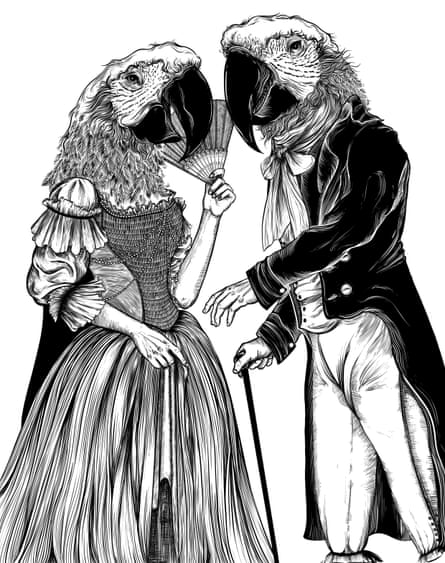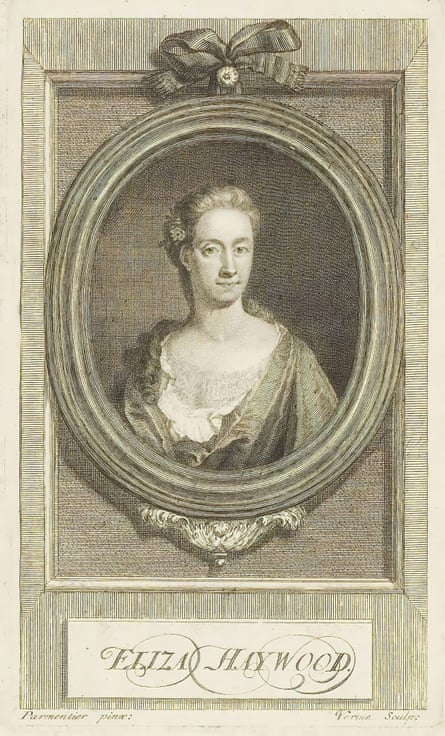She is the real-life Lady Whistledown, an eyebrow-raising female writer who penned a salacious anonymous gossip sheet that skewered 18th-century London society.
Like the fictional pamphlet from Netflix hit Bridgerton, which returned for a third series last week, Eliza Haywood’s The Parrot, published in 1746, has a distinctive, mocking voice that punches up and “speaks truth to power”. Now, a new book will republish Haywood’s funny, subversive periodical, which she wrote from the perspective of an angry green parrot, and seek to raise awareness of her groundbreaking work.
A prolific anti-racist, proto-feminist writer, Haywood used her transgressive newsletter to expose 18th-century hypocrisies about race and gender. It was published weekly over nine issues.

The parrot informs its predominantly male readers, who frequented the coffee houses where such periodicals were circulated, that it is an enslaved creature, taken from its home in the East Indies and shipped all over Europe before arriving in London. From its cage in an aristocratic family home, it has observed the way men and women behave in English society and can comment on their failings and cruelty.
Dr Adam Smith, associate professor in 18th century literature at York St John University, who led a project to republish every known issue of the periodical in the forthcoming ebook, The Parrot by Eliza Haywood, said: “This parrot has been all over the world, which is why it thinks it has got credentials to judge the way people behave in England. It has this outsider perspective.”
Most contemporary periodicals were written by male writers. By creating a different voice within this print culture, Haywood conveyed the challenging idea that “not everyone is like you”, said Smith.
“It introduces this idea of difference, which creates a space for women or people of colour.”
At one point, the parrot complains about being judged and marginalised for being green and asks why its appearance should have any bearing on the quality of its ideas. “As if the complexion of the body had any influence over the faculties of the mind,” Haywood writes. “Yet merely on this score they resolve, right or wrong, to condemn all I say beforehand.”

Smith said: “Haywood makes the parrot stand in as a metaphor for all kinds of different things … most obviously, she’s talking about being green, instead of talking about being black. So she’s saying: ‘You shouldn’t judge black people based on how they look, but on the content of their ideas, their character, their behaviour etc … ultimately, the message is: don’t judge people on external appearances.”
Not much is known about Haywood, who was born in the 1690s, or her upbringing, Smith said. “She made her income by writing – everything from what we might call journalism to plays and short novels.”
Fantomina, her most famous novella, was published in 1725: its central character is a woman who pretends to be a prostitute so she can have premarital sex with an attractive man she intends to marry, only to discover – too late – that a man who would cheat on her is not so attractive, after all.
Neglected for centuries, partly because Alexander Pope traduced Haywood as a writer in his mock epic poem The Dunciad, the book rose to prominence in the 1980s when it was rediscovered by feminists and is now regularly anthologised. “I always teach it and my students can’t believe that it is a real text written in the 18th century,” Smith said.
Haywood’s first popular periodical, the Female Spectator, was often recognised as “the first periodical by women for an explicitly female audience”, he added.
In the 18th century, female writers were often denigrated and written off by their male counterparts as “pretty prattlers” and “shameless scribblers” who merely repeated – or parroted – men’s ideas they had come across, without thinking for themselves. Haywood attacks this idea in her very first newsletter: “Mark me then, and suppose me not a mere parrot, which without distinction utters all he hears ... but a Thing [who is] inspired to utter only sacred Truths.”
after newsletter promotion
By turning herself into a “mere parrot”, who claims it is not a mere parrot, Haywood neutralises the insults of her critics and uses satire to speak truth to power in a male-dominated world, Smith said.
The parrot informs its readers that, although it sees everything, it is not “interested in gossip for gossip’s sake – it is interested in gossip with a moral imperative”.
For example, one issue includes an anecdote about a highly respected gentleman called Oran who tortures flies in front of the parrot, pulling off their legs and wings when no human is present.
The shocked parrot cannot, at first, reconcile this behaviour with Oran’s esteemed reputation in society – but eventually realises there is only one explanation. “The parrot concludes Oran must, in fact, be a cruel man and the only reason so many people believe the opposite is because they’ve been told to believe that,” said Smith.
The new edition will make Haywood’s esoteric language and spelling accessible to modern readers, enabling academics to set the text as primary reading material in the future. It will be launched at York’s Georgian festival in August.
“Haywood disrupts people’s assumptions that in the 18th century, women didn’t have a voice, that they were silenced,” said Smith.
“So if people are excited about Bridgerton and they want to read a real periodical, written by a real woman, who is saying things that are very much in line with modern progressive commitments to social justice, they can – because it really exists.”









